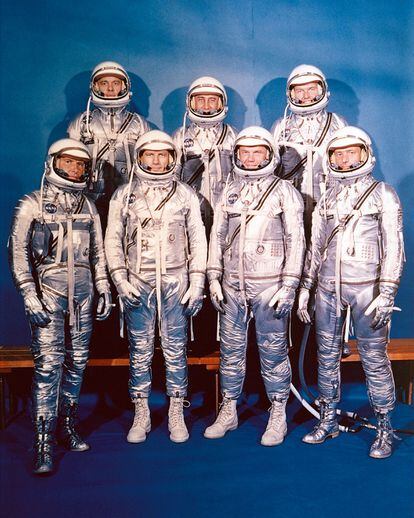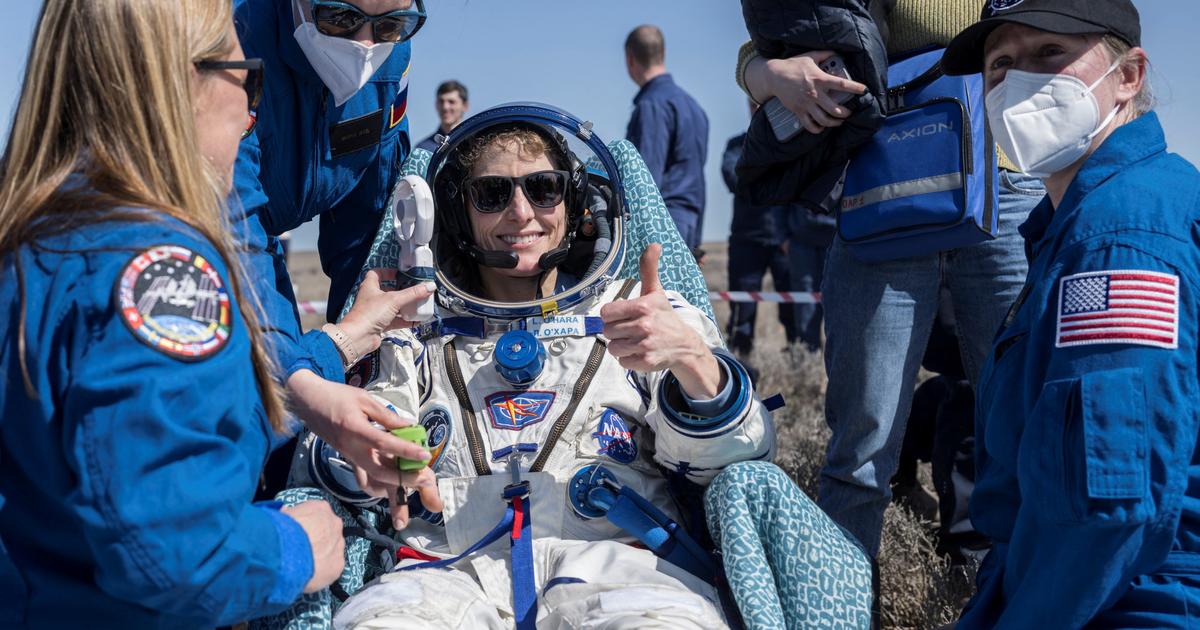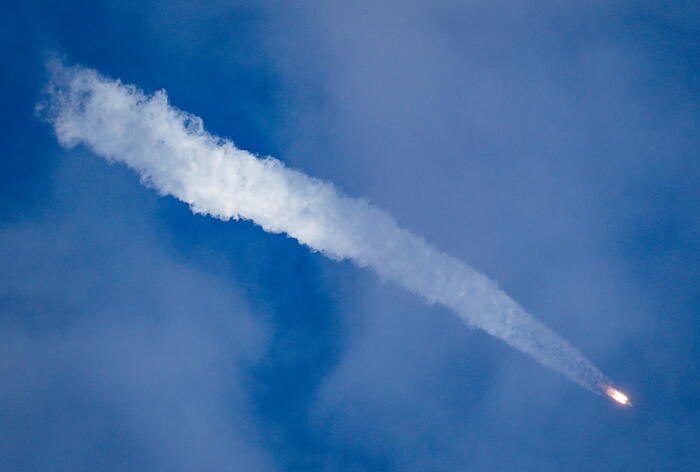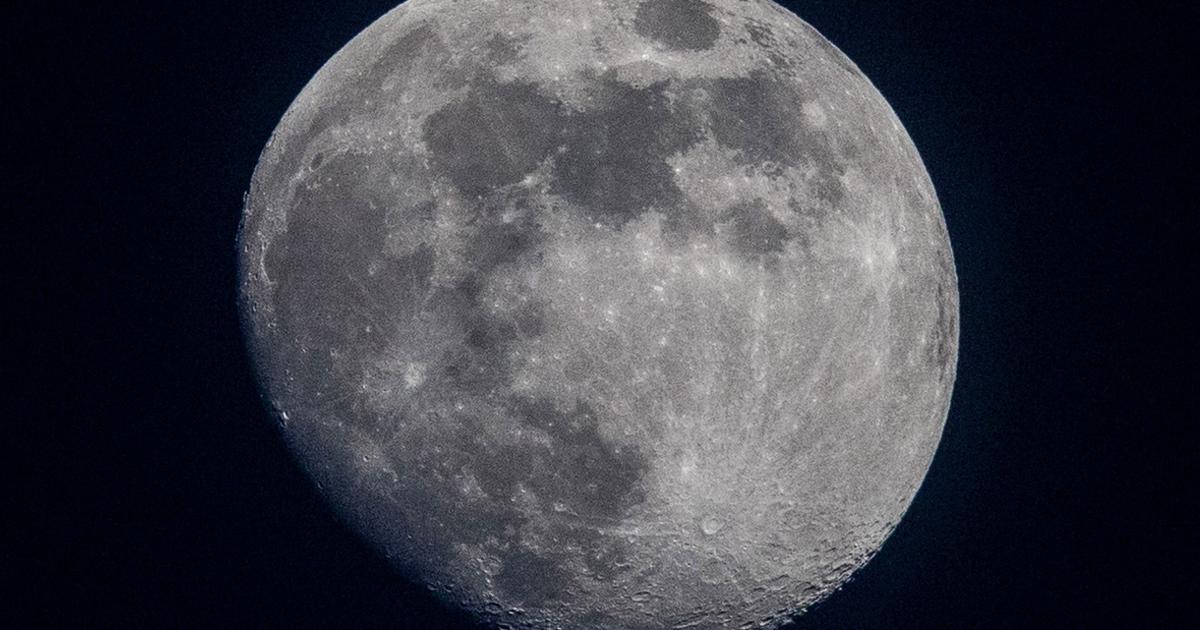It is now sixty years since the first man flew through space.
It was Yuri Alekseyevich Gagarin, a name forever inscribed in history books.
Gagarin was the perfect candidate, the prototype of the Soviet "new man" in the context of the tensions of the Cold War.
A work whose masterstroke, according to
The Times,
is to unite the stories of the two space programs.
Yuri Alekseyevich Gagarin enrolled in 1959 in a program
reserved that he was looking to recruit future cosmonauts.
It was only two years since the first Sputnik and the only living being that had flown through space was called
Laika
, a dog that had been picked up on the streets of Moscow.
The selection process that Gagarin underwent was brutal.
The original 350 candidates were reduced first to a hundred, then to twenty, and finally to just six.
According to legend, the chief designer, Sergei Korolev, had a preference for Gagarin not only because of his excellent test performance, but because he was the only one who acknowledged being dizzy like soup after a session in the centrifuge.
All his teammates claimed to have enjoyed the test.
Korolev interpreted that only a sincere, unsweetened report could be expected from him when he flew through space.
Gagarin took off on April 12, 1961, aboard
Vostok 1
.
He only circled the Earth once.
Ninety minutes that made him a world celebrity.
Of his remaining five companions, four would later fly in similar capsules.
The fifth, Grigori Nelyubov was expelled for an episode of indiscipline as a result of a colossal drunkenness.
Instead, the last flight of the program was assigned to a woman: Valentina Tereshkova who would later marry (and divorce) the third cosmonaut, Andrian Nikolayev.
In a modern version of the
damnatio memoriae
(condemnation of memory), Nelyubov officially disappeared from the Russian space program.
His image was airbrushed (the Photoshop of the time) in all official photographs.
Sometimes, with little skill, forgetting a hand or a foot that was left floating because someone failed to touch it up.
Thus was born the legend of the Russian cosmonauts lost in space with an identity never recognized.
Destined for a remote air base in eastern Siberia, he died in 1966, under the wheels of a train near Vladivostok.
The then Soviet President Leonid Breznev, decorated astronaut Yuri Gagarin on April 14, 1961, just two days after having made his space flight.
Keystone-France / Getty Images
Gagarin's flight took place just as NASA was preparing, in turn, the launch of its first astronaut.
It was the beginning of the
man-in-space program
that would later become known as Mercury.
Once again, the Soviet Union was ahead of American plans.
This disappointment, and the urgent need to restore national prestige, prompted John F. Kennedy's decision to reach the Moon "before the decade is out."
And, of course, before the Russians.
By then, NASA had selected seven military pilots for its astronaut corps, including no women.
There was a privately funded parallel program involving thirteen candidates, but NASA did not send a woman into space until twenty years later.
The first American astronaut was Alan Shepard.
He did so crammed into a tiny rocket-powered capsule derived from von Braun's German V-2.
It was a mere 100-mile "flea jump" over the Atlantic, but NASA had the ability to sell it as equivalent to Gagarin's feat.
That and a series of reports in
Life
magazine
turned Shepard and his companions into prototypes of the American hero even before they had flown.
The group of astronauts known as Mercury Seven.
Above, from left, Alan Shepard, Gus Grissom and Gordon Cooper.
Below, in the same position, Walter Schirra, Deke Slayton, John Glenn and Scott Carpenter.
POT
Of the "seven of the Mercury", six would travel through space.
A mild heart condition removed Donald Slayton from active duty, and he was appointed chief of the astronaut bureau.
A position that accumulated enormous power.
He decided, for example, who would fly each mission.
Among them, Neil Armstrong (selected from a second group of astronauts) and Buzz Aldrin (chosen from a third group).
When the missions to the Moon began, Slayton intended for at least one of the original Mercury astronauts to go on one of them.
But there wasn't much to choose from.
Grissom had died in the Apollo capsule fire during tests in 1967. Glenn - who always carried the aura of the quintessential hero - was a senator in Washington.
Carpenter, discarded because of his poor behavior on his only orbital trip, was currently engaged in underwater exploration.
Schirra had left NASA to collaborate with the legendary Walter Cronkite on the televised broadcasts of each flight.
And Cooper was blacklisted for his overly lax attitude during workouts.
Only Alan Shepard's option remained.
He was back in business after overcoming a Menière syndrome that kept him confined to the ground for years.
And he had made good use of that time: he was the only millionaire astronaut, thanks to his real estate investments.
He received command of
Apollo 14
and went to the Moon in 1972, commanding the crew with the least prior experience: fifteen minutes of space flight between the three of them.
At the end of the exploration of the Fra Mauro crater and before taking off from the Moon, Shepard indulged himself.
He had brought with him a couple of golf balls and a 9-iron head. Before the television camera that was broadcasting the image to everyone, he tried a couple of strokes.
The first one failed;
the second sent the ball "miles and miles" away, certainly an exaggeration even considering the low gravity of the place.
In popular memory, that was the peak moment in the
Apollo 14
expedition
.
As for Yuri Gagarin, his status as a national idol backfired him.
He was excluded from the space mission program so as not to expose him to an accident, such as the one that cost the life of his partner and friend Vladimir Komarov.
But the precaution was useless.
He was killed when the fighter he was piloting, accompanied by an instructor, crashed during a routine flight in 1968. He had just turned 34.









